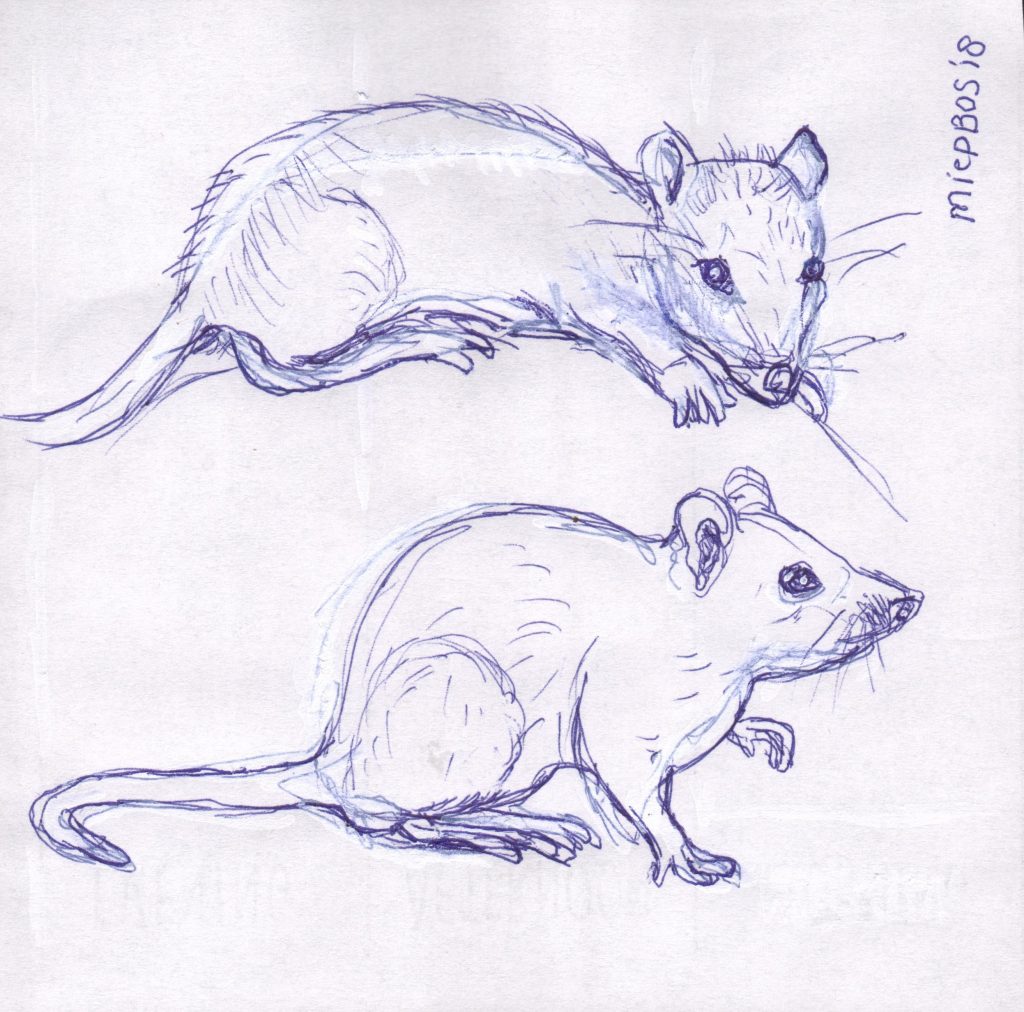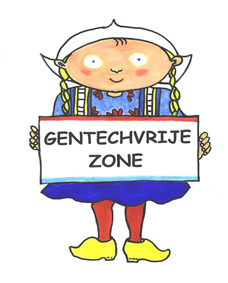
This is the information you have filled in the request for
EFSA Scientific Opinion on the assessment of genetically modified maize MZHG0JG for food and feed uses, under Regulation (EC) No 1829/2003 (application EFSA-GMO-DE-2016-133)
1. Name : Miep Bos
Organisation : The European GMO-free Citizens (De Gentechvrije Burgers)
Organisation type :Others…
City : Lelystad
Country :The Netherlands
E-mail :info@gentechvrij.nl
Public : Yes
* Toxicology
“The GMO Panel concludes that maize MZHG0JG is nutritionally equivalent to and as safe as the conventional counterpart and non-GM maize reference varieties tested, and no post-market monitoring of food/feed is considered necessary. “SCIENTIFIC OPINION
ADOPTED: 17 October 2018
doi: 10.2903/j.efsa.2018.5469
“…….in 1985, the EPA classified glyphosate as a Class C carcinogen. Six years later, just about the time former Monsanto lawyer Michael Taylor got himself installed in a key position at the U.S. Food & Drug Administration (FDA), the EPA reversed that decision.” http://salsa3.salsalabs.com/o/50865/t/0/blastContent.jsp?email_blast_KEY=1315174
Do GMOs Accumulate Formaldehyde and Disrupt Molecular Systems Equilibria? Systems Biology May Provide Answers.
V. A. Shiva Ayyadurai*, Prabhakar Deonikar Systems Biology Group, International Center for Integrative Systems, Cambridge, MA, USA Email: *vashiva@integrativesystems.org
Received 17 June 2015; accepted 7 July 2015; published 10 July 2015
Copyright © 2015 by authors and Scientific Research Publishing Inc. This work is licensed under the Creative Commons Attribution International License (CC BY). http://creativecommons.org/licenses/by/4.0/
Abstract.
Safety assessment of genetically modified organisms (GMOs) is a contentious topic. Proponents of GMOs assert that GMOs are safe since the FDA’s policy of substantial equivalence considers GMOs “equivalent” to their non-GMO counterparts, and argue that genetic modification (GM) is simply an extension of a “natural” process of plant breeding, a form of “genetic modification”, though done over longer time scales. Anti-GMO activists counter that GMOs are unsafe since substantial equivalence is unscientific and outdated since it originates in the 1970s to assess safety of medical devices, which are not comparable to the complexity of biological systems, and contend that targeted GM is not plant breeding. The heart of the debate appears to be on the methodology used to determine criteria for substantial equivalence. Systems biology, which aims to understand complexity of the whole organism, as a system, rather than just studying its parts in a reductionist manner, may provide a framework to determine appropriate criteria, as it recognizes that GM, small or large, may affect emergent properties of the whole system. Herein, a promising computational systems biology method couples known perturbations on five biomolecules caused by the CP4 EPSPS GM of Glycine max L. (soybean), with an integrative model of C1 metabolism and oxidative stress (two molecular systems critical to plant function). The results predict significant accumulation of formaldehyde and concomitant depletion of glutathione in the GMO, suggesting how a “small” and single GM creates “large” and systemic perturbations to molecular systems equilibria. Regulatory agencies, currently reviewing rules for GMO safety, may wish to adopt a systems biology approach using a combination of in silico, computational methods used herein, and subsequent targeted experimental in vitro and in vivo designs, to develop a systems understanding of “equivalence” using biomarkers, such as formaldehyde and glutathione, which predict metabolic disruptions, towards modernizing the safety assessment of GMOs.
Ayyadurai, V.A.S. and Deonikar, P. (2015) Do GMOs Accumulate Formaldehyde and Disrupt Molecular Systems Equilibria? Systems Biology May Provide Answers. Agricultural Sciences, 6, 630-662. http://dx.doi.org/10.4236/as.2015.67062
“Basis — Inadequate evidence for oncogenicity in animals. Glyphosate was originally classified as C, possible human carcinogen, on the basis of increased incidence of renal tumors in mice.”
https://cfpub.epa.gov/ncea/iris/iris_documents/documents/subst/0057_summary.pdf
3.2 Lankas, 1981 Testicular interstitial cell tumors In this 2-year study in Sprague-Dawley rats conducted by Bio/dynamics, EPA reports a significant trend of testicular interstitial cell tumors in males, with pairwise comparison significant even after multiple comparisons adjustment (0.039). It appears that EPA misreported the high-dose incidence rate in Table 4.1 (6/44 = 14%, not 12%).
https://www.centerforfoodsafety.org/files/sap-glyphosate-cancer-comments–cfs-20161_35863.pdf
https://file.scirp.org/pdf/AS_2015071017323113.pdf
TIME: I Won a Historic Lawsuit, But May Not Live to Get the Money
“Evidence revealed in the trial included internal Monsanto records that included discussions of “ghostwriting” scientific papers that asserted the safety of its products and plans to discredit an international agency that declared the main ingredient in Roundup, a chemical called glyphosate, to be a probable human carcinogen” Quote By CAREY GILLAM
Do GMOs Accumulate Formaldehyde and Disrupt Molecular Systems Equilibria?
Systems Biology May Provide Answers
V. A. Shiva Ayyadurai*, Prabhakar Deonikar Systems Biology Group, International Center for Integrative Systems, Cambridge, MA, USA Email: *vashiva@integrativesystems.org
Received 17 June 2015; accepted 7 July 2015; published 10 July 2015
Over GLA. Met toestemming overgenomen.
In 1987 verscheen het artikel:
Thomson, C. J. et al.
“Characterisation of the herbicide-resistance gene bar from S.hygroscopicus”
The EMBO Journal Vol. 6 no.9, pag. 2519-23.
Hierin is beschreven dat phosphinothricin-Acetyl-transferase ook glutaminezuur als substraat heeft.(Door de beide stoffen bij elkaar te voegen, en het reactie-produkt aan te tonen.)
Hoechst bestrijdt dit in een rapport (93-01):
Dr. Arno Schulz
“L-phosphinothricin N acetyltransferase
Biochemical Characterisation”
Hierin wordt glufosinaat TESAMEN met een grote overmaat glutaminezuur (en andere aminozuren) aan de werking van het acetyltransferase blootgesteld (met acetylbron).
Schulz kon GEEN reactieprodukt met glutaminezuur aantonen en concludeerde toen maar, dat glutaminezuur geen substraat zou zijn.
DIT IS ONJUIST EN ZEER MISLEIDEND omdat
• in situaties waarin het acetyltransferase (aanwezig in de gemodificeerde plant) toxisch zou kunnen werken, zoals in ons maagdarmkanaal, de gelijktijdige aanwezigheid van grote hoeveelheden glufosinaat niet bestaat (zie Thomson). Ongelofelijk!
• het onder de proefomstandigheden van Schulz logisch is, dat het acetyltransferase het glufosinaat gaat acetyleren met gebruikmaking van niet alleen de bijgevoegde acetylbron, maar ook met gebruikmaking van geacetyleerd glutaminezuur als acetylbron (omdat affiniteit van het transferase voor glufosinaat groter is).
In een MENGSEL zal alleen een reaktieprodukt gevormd worden met het substraat waarvoor de meeste affiniteit bestaat.
EEN ZEER MISLEIDEND RAPPORT.
Wij maken bezwaar tegen het ontwikkelen van een GMO waarin dit gen-produkt voorkomt.
1. Het zou niet teratogeen zijn volgens Hoechst:
E. Ebert et at.: Summery of safety Evaluation toxicity studies of Glufosinate ammonium. 1989/1990.
Afwijkingen gevonden bij het nageslacht van konijnen werden door Hoechst onder de tafel geveegd als zijnde een gevolg van de “maternal toxicity”!!
De toxiciteit op het moederdier zou haar verhinderen gezond nageslacht te krijgen! Wij vinden dit een vies spelletje met woorden.
Wij leggen daarnaast de onderzoekgegevens van Tomoko Fujii et at. 1996
“Alterations in the Response to Kainic Acid in Rats Exposed to Glufosinate Ammonium, a Herbicide, during Infantile Period” Studie gesponsored door het Japanse Ministry of Education, Science, Sports and Culture.
Exposure to GLA, even in low doses (1 mg/kg) during Infantile Period in the rat, induces alterations in the kainic receptor in the brain.
T. Watanabe. 1996
“Apoptose induced by GLA in the neuroepithelium of developing mouse embryos in culture. Geprogrammeerde celdood door afscheiding van stoffen, welke de cel inwendig vernietigen; deze zelfmoord wordt gereguleerd door een zelfmoordgen, dat kennelijk door GLA wordt aangeklikt.
T. Watanabe et al. 1997.
“Developmental and Dysmorphogenic Effects of GLA in mouse Embryos in culture”. Misvormingen.
2. Het zou niet sensibiliserend zijn.
Het tegendeel van “Non-sensitizing properties”van GLA heeft mevrouw Eijsten aan den lijve ondervonden. Hierover heeft zij reeds eerder melding gedaan. In 1992 werd zij gesensibiliseerd (iemand van de plantsoenendienst ging door met het bespuiten van grasranden in een park met Finale SL 14, terwijl ze daar op een bank zat te lezen – met haar hond. Ogenschijnlijk niets aan de hand. Het jaar daarop echter liep zij met hond langs grasranden, die kort tevoren bespoten waren met dit herbicide en prompt 7 uren later zaten haar benen vol eczeem.
Volgende dag liep zij dezelfde route, maar nu met mouwloze blouse, en prompt waren ook haar armen en gezicht vol eczeem. (Ook haar hond had rode vlekken op zijn buik).
Hierover heeft zij reeds vele malen verslag gedaan. Het ernstige is echter, dat men probeert deze feiten onder tafel te schuiven, b.v. met het argument van voedselallergie. (Brief van VWS, Hr. Top/ Mevr. Terpstra van 10 juni 1996).Een zeer wetenschappelijke mededeling.
Op de ingestuurde foto was duidelijk te zien dat het eczeem voorkwam op onbeschermde lichaamsdelen! Ook was er op de rug van haar handen geen eczeem -logischerwijze door handenwassen na het contact.
Onderzoek bij de dermatoloog bestond uit testen met patches met vasaline waarin het herbicide was aangebracht. Dus een hydrofiele stof werd getest met een hydrofobe stof. Logisch dat er geen effect na de test te zien was. Tot driemaal toe heeft de dermatoloog op dezelfde wijze getest, ondanks haar verzoek te testen met een hydrofiele stof, b.v. Lanoline of puur op de huid.
Zijn argument was:”Ik doe het altijd zo”, hiermede zijn incompetentie uitende.
Voordien had hij haar meegedeeld, dat hij dit herbicide niet kende, en haar verzocht dit herbicide mee te brengen. Dit was vreemd, daar Finale al zo’n 20 jaar gebruikt werd.
Dat was ook de reden, dat zij diverse literatuur verzamelde over Finale en een Amerikaans boek liet zien waarin methoden stonden vermeld om sensibilisatie aan te tonen.
In de EU LEGISLATION worden vele methoden voorgeschreven om sensibilisatie aan te tonen. zij vraagt zich steeds af, wat de reden was dat hij geen andere test wilde doen. Zij vond dit allemaal zeer laakbaar.
Als dermatologen in Nederland allen zo handelen als “haar dermatoloog”, dan worden er nooit gevallen van eczeem tengevolge van GLA aangetoond!
Wat is de reden om de juiste tests niet te doen?
Wij zijn de mening toegedaan, dat alles geprobeerd wordt om de schadelijke werking van GLA te verdoezelen.
In het jaarverslag van Consument en Biotechnologie 1996/1997 werd vermeld, dat het rapport van Fujji uit 1996 aangaf dat hersenbeschadiging werd aangetoond met grote doses. Terwijl Eijsten notabene op verzoek van C & B het bewuste rapport van Fujii uit 1996 aan hen had gestuurd. Dit rapport ging er juist om, dat met zéér kleine doses werd gewerkt (1 mg/kg).
Op haar klacht beloofde men haar een en ander te zullen corrigeren. Onlangs deelde men haar mede, dat er niets zal worden gecorrigeerd. Zonder motief waarom. Deze verdraaiing van de waarheid is een voorbeeld van foutief lobbyen.
Wij vinden het noodzakelijk het vorenstaande over sensibilisatie nogmaals mee te delen, in het kader van de gevaren die er bestaan bij spuiten van herbiciden en door de drift bij het telen van-kleinschalig of grootschalig-herbicide-resistente gewassen. Wet van Murphy.
Fragment uit: Bezwaarschrift bij een ontwerpbeschikking betreffende herbicide-resistentie door J. van der Meulen, L. Eijsten. https://www.gentechvrij.nl/dossiers/archief-lily-eijsten/bezwaarschrift-bij-een-ontwerpbeschikking-betreffende-herbicide-resistentie/
Zie ook:
Mutation Research/Genetic Toxicology and Environmental Mutagenesis
Volume 769, 15 July 2014, Pages 7-12
Induction of micronuclei and nuclear abnormalities in tadpoles of the common toad (Rhinella arenarum) treated with the herbicides Liberty® and glufosinate-ammonium
Author links open overlay panel Rafael C. Lajmanovicha b Mariana C. Cabagna-Zenklusen b Andrés M. Attademoa b Celina M. Jungesa b Paola M.Peltzera b Agustín Bassó b Eduardo Lorenzattib c
a
National Council for Scientific and Technical Research (CONICET), Buenos Aires, Argentina
b
Faculty of Biochemistry and Biological Sciences, (FBCB-UNL), Ciudad Universitaria, Paraje el Pozo s/n, 3000 Santa Fe, Argentina
c
Institute of Technological Development for the Chemical Industry (INTEC-UNL-CONICET), Güemes 3450, 3000 Santa Fe, Argentina
Received 1 June 2013, Revised 12 December 2013, Accepted 15 January 2014, Available online 24 April 2014.
Quote of abstract: “Our study demonstrates that the commercial formulation of a GLA-based herbicide induces micronucleus formation in R. arenarum tadpoles, in contrast to the active ingredient. According to these results, the inert ingredients of the commercial formulation played an important role in the production of genotoxic damage in erythrocytes of amphibian tadpoles.”
Bound to fail: The flawed scientific foundations of agricultural genetic engineering (part 2) https://www.gmwatch.org/en/news/latest-news/18593
This quote is from a second commentary on the same theme by the London-based molecular geneticist Dr Michael Antoniou, this time from the standpoint of molecular biology.
Part 1 of this series of two articles is here: https://www.gmwatch.org/en/news/latest-news/18582
Quote: ”However, in-depth molecular profiling analysis of transgenic plants shows that transgenic procedures invariably result in a spectrum of unpredicted alterations, not only in the function of the inserted foreign transgene but also of the plant’s host genes. This in turn results in unintended changes in the plant’s biochemistry”.
10. Krimsky S. An illusory consensus behind GMO health assessment. Sci Technol Hum Values. August 2015:0162243915598381. doi: 10.1177/0162243915598381
11. Robinson C, Antoniou M, Fagan J. GMO Myths and Truths (4th Edition): A Citizen’s Guide to the Evidence on the Safety and Efficacy of Genetically Modified Crops and Foods, 4th Edition. Chelsea Green; 2018. https://www.amazon.com/GMO-Myths-Truths-Citizens-Genetically/dp/0993436722/ref=dp_ob_title_bk.
12. Gilbert N. Cross-bred crops get fit faster. Nat News. 2014;513(7518):292. doi:10.1038/513292a
14. Francia E, Tacconi G, Crosatti C, et al. Marker assisted selection in crop plants. Plant Cell Tissue Organ Cult. 2005;82(3):317-342. doi:10.1007/s11240-005-2387-z
15. GMWatch. Non-GM successes. gmwatch.org. http://www.gmwatch.org/index.php/articles/non-gm-successes. Published 2018.
https://www.gmwatch.org/en/news/latest-news/18593
HERBICIDEN
Norway:
“In the 42-day nutritional study with broilers, feed containing glyphosate and glufosinate-ammonium treated maize MZHG0JG was used in the test group. A range of pesticides and other contaminants in the prepared diets were analysed and reported. However, residual levels of the target herbicides glyphosate and glufosinate-ammonium were not included. VKM suggests that the applicant provides this information.”
The answer:
“Testing for the presence of intended pesticide residues in the diets used in the 90-day feeding study is not a regulatory requirement.”
From: Application EFSA-GMO-DE-2016-133 (maize MZHG0JG)
Comments and opinions submitted by Member States during the three-months consultation period.
Wij zijn het eens met het commentaar van Noorwegen, dat getest moet worden op “residual levels of the target herbicides glyphosate and glufosinate-ammonium”, zie boven en we zijn het eens met o.a. Duitsland dat de herbiciden glyfosaat en glufosinaat-ammonium die gebruikt worden bij dit gg mais giftig zijn en dat de voedselveiligheid hierdoor in gevaar komt. We verzoeken dan ook om een interne herziening. Dat het GMO panel daar niet bevoegd toe is bestrijden wij o.a. vanwege de volgende uitspraak:
“85 Vastgesteld moet echter worden dat het verzoek tot interne herziening, zoals in de punten 49 en 62 hierboven is uiteengezet, in de onderhavige zaak slechts ontvankelijk is voor zover daarin is gesteld dat de besluiten tot verlening van een vergunning strijdig waren met het milieurecht in de zin van verordening nr. 1367/2006. In artikel 4, lid 1, onder a), en artikel 16, lid 1, onder a), van verordening nr. 1829/2003 is bepaald dat de betrokken levensmiddelen en diervoeders niet in de handel mogen worden gebracht indien zij negatieve gevolgen voor de gezondheid van mens of dier of het milieu hebben. De sojasoorten 305423, MON 87769 en MON 87705 vormden tijdens hun teelt door menselijke interventie gewijzigde elementen die in verbinding stonden met de natuurlijke omgeving. De genetische modificatie van deze elementen van het milieu kon gevolgen hebben voor hun voedingswaarde of een risico vormen voor de voedselveiligheid en vormde dus een kwestie van milieurecht in de zin van verordening nr. 1367/2006.”
Bron:
InfoCuria – Jurisprudentie van het Hof van Justitie
ARREST VAN HET GERECHT (Zevende kamer)
14 maart 2018 (*)
„Milieu – Genetisch gemodificeerde producten – Verordening (EG) nr. 1367/2006 – Verordening (EG) nr. 1829/2003 – Genetisch gemodificeerde soja MON 87769, MON 87705 en 305423 – Verwerping van een verzoek tot interne herziening van de besluiten tot verlening van een vergunning voor het in de handel brengen – Begrip ‚milieurecht’ – Artikel 10 van verordening nr. 1367/2006”
In zaak T-33/16,
TestBioTech eV, gevestigd te München (Duitsland), vertegenwoordigd door R.
Stein, solicitor, K. Smith, QC, en J. Stevenson, barrister,
verzoekster,
tegen
Europese Commissie, vertegenwoordigd door J. Tomkin, L. Pignataro-Nolin en
C. Valero als gemachtigden,
Verweerster
U gelieve de gehele uitspraak van bovenstaande als ingelast te beschouwen.
https://eur-lex.europa.eu/legal-content/EN/TXT/PDF/?uri=CELEX:62016TJ0033&from=NL
We read: “The Dutch CA has assessed the dossier with respect to the environmental safety of MZHG0JG maize and has no comments or requests for additional information in relation to the safety of this GM event”.
Application EFSA-GMO-DE-2016-133 (maize MZHG0JG) Comments and opinions submitted by Member States during the three-months consultation period”.
Our comment: We are ashamed to be Dutch, why has the Dutch CA lost its moral compass? Austria, Belgium, Hungary, France, Germany and Norway asked a lot of questions about this GM maize. It will be high time this important issue will be an important one to address the safety of these GM maize – and other GM products and the herbicides that have been used! If this is not possible then the EU should change the law!
A team of Harvard scientists:
“Crossover trials have shown that switching from consuming conventionally grown foods to organic foods decreases urinary concentrations of pesticide metabolites, suggesting reduced exposure to pesticides.4
Organic Foods for Cancer Prevention—Worth the Investment?
Elena C. Hemler et All
4. Bradman A, Quirós-Alcalá L, Castorina R, et al. Effect of organic diet intervention on pesticide exposures in young children living in low-income urban and agricultural communities.Environ Health Perspect.2015;123(10):1086-1093.doi:10.1289 /ehp.1408660, oktober 2015.
“There are probably many other health effects; we just haven’t studied them”
Quote of Mrs. C. Gillam:
“The problem is that it is not clear to what extent long-term low-level exposure to pesticide residues through food may or may not be health hazards,” said Dr. Jorge Chavarro, associate professor of the Departments of Nutrition and Epidemiology at the Harvard T.H. Chan School of Public Health, and one of the study authors.”
https://www.ehn.org/when-safe-may-not-really-be-safe-2621578745.amp.html
* Others
De Gentechvrije Burgers schrijven al een aantal jaren zienswijzen vanwege de open consultations. Nooit krijgen zij een reactie op hun zienswijzen, noch weten zij of het enige zin heeft ze te schrijven als ze kennelijk alleen voor kennisgeving worden aangenomen. Kunt u ons vertellen wat dan het nut is van deze open consultations? Consumenten, die deze gentech producten moeten kopen mogen toch zeker een mening hebben over wat ze hun familie voorzetten? Of moeten ze maar alles slikken? Zij eten daarom uitsluitend nog biologisch voedsel. Er moet voor worden gezorgd dat ze dit ook kunnen blijven doen.
The European GMO-free Citizens will not eat these GMOs!
De Gentechvrije Burgers worden gesteund door St. Natuurwetmoeders,
Bussum en St. Ekopark, Lelystad.
6. Labelling proposal
No gm maize!

